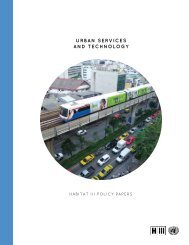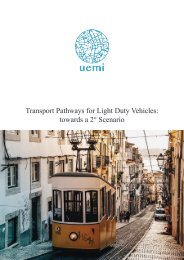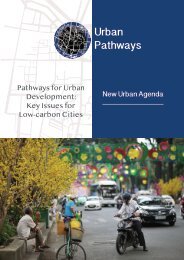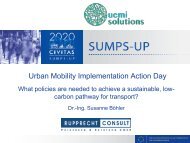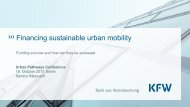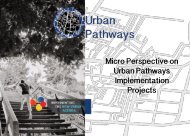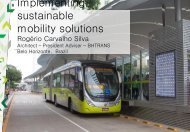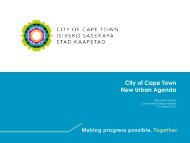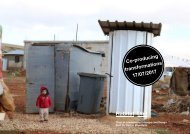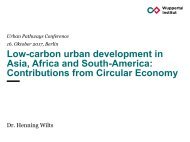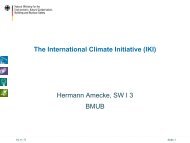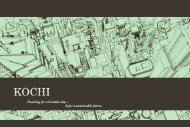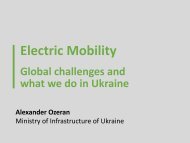Brazil
You also want an ePaper? Increase the reach of your titles
YUMPU automatically turns print PDFs into web optimized ePapers that Google loves.
sources other than hydropower by 2030.<br />
Hydropower currently provides two thirds<br />
of the country’s electricity (WRI 2015).<br />
• Agriculture: strengthening the<br />
Low Carbon Emission Agriculture Program<br />
(ABC) as the main strategy for<br />
sustainable agriculture development.<br />
• Industry: Promote new standards<br />
of clean technology and further<br />
enhance energy efficiency measures<br />
and low carbon infrastructure.<br />
• Transportation: Promote efficiency<br />
measures, and improve infrastructure<br />
for individual transport and<br />
public transportation in urban areas.<br />
Observers such as the <strong>Brazil</strong>ian Obersvatorio<br />
do Clima, the World Resources Institute,<br />
or the NRDC claim that the deforestation<br />
targets are weaker than earlier national targets;<br />
that monitoring needs to be ensured<br />
(despite significant budget cuts to the environmental<br />
ministry); that forest degradation<br />
is increasing again in the most recent years;<br />
and that other sectors besides LULUCF are<br />
not adequately addressed (Observatorio<br />
do Clima, 2016, WRI 2015, NRDC, 2016).<br />
<strong>Brazil</strong>´s Energy Mix:<br />
increasing the share of<br />
sustainable biofuels in the<br />
<strong>Brazil</strong>ian energy mix to approximately<br />
18% in 2030<br />
population of over 2.4 million, with 5.7 million<br />
in the official Metropolitan Area (IBGE,<br />
2014). Car and motorcycle ownership in<br />
Belo Horizonte has increased signifianclty<br />
in recent years as a side effect of growing<br />
welfare levels. Accoridingly, the modal<br />
share in Belo Horizonte suffered significant<br />
changes in the last 17 years: The share of<br />
trips by private motor vehicles increased<br />
from 20,7% to 36,6% while public transport<br />
trips reduced from 44,6% to 28,1%.<br />
2. Sustainable urban basic services initiatives<br />
currently under consideration -<br />
Example of Belo Horizonte<br />
Considering the rather moderate ambition<br />
level of <strong>Brazil</strong>’s NDC, local action<br />
in cities play a crucial role for climate<br />
change mitigation. Belo Horizonte is<br />
one example of an active mid-sized city<br />
commited to sustainable development.<br />
Belo Horizonte is the capital of the state of<br />
Minas Gerais and located in the southeastern<br />
region of <strong>Brazil</strong>. It is the third-largest<br />
metropolitan area in the country and has a<br />
Figure 1: Development of the number<br />
of cars and motorcycles in Belo<br />
Horizonte Source: PlanMob-BH<br />
Table 1: Development of modal share<br />
1995, 2002 and 2012 (number of trips )<br />
1995 2002 2012<br />
Walk 1.122.312 1.072.768 2.200.601<br />
Bicycle 7.661 24.522 26.217<br />
Public Transport 1.295.810 1.678.304 1.775.490<br />
Private car 576.998 940.569 2.062.271<br />
Motorcycle 15.570 33.780 252.983<br />
Other 6.248 17.127 9.381<br />
Total trips 3.024.598 3.767.070 6.326.943<br />
IMPLEMENTING<br />
THE NEW URBAN<br />
AGENDA<br />
www.urban-pathways.org




